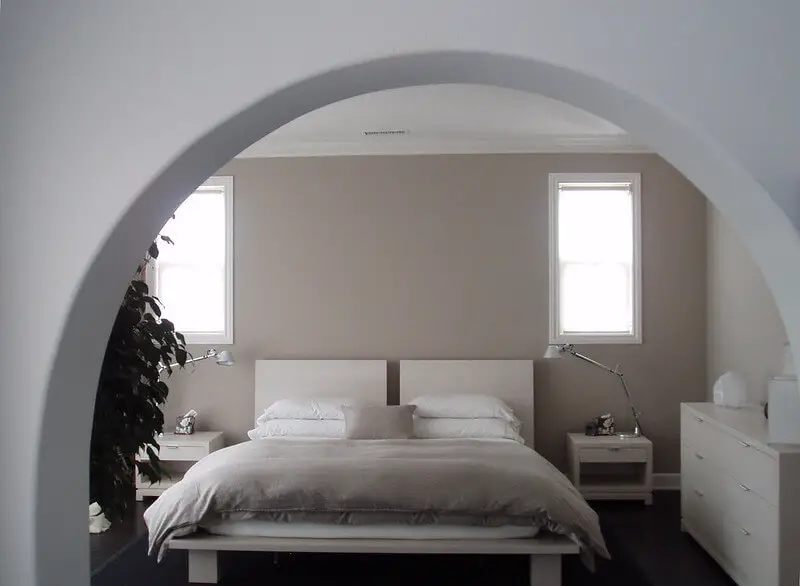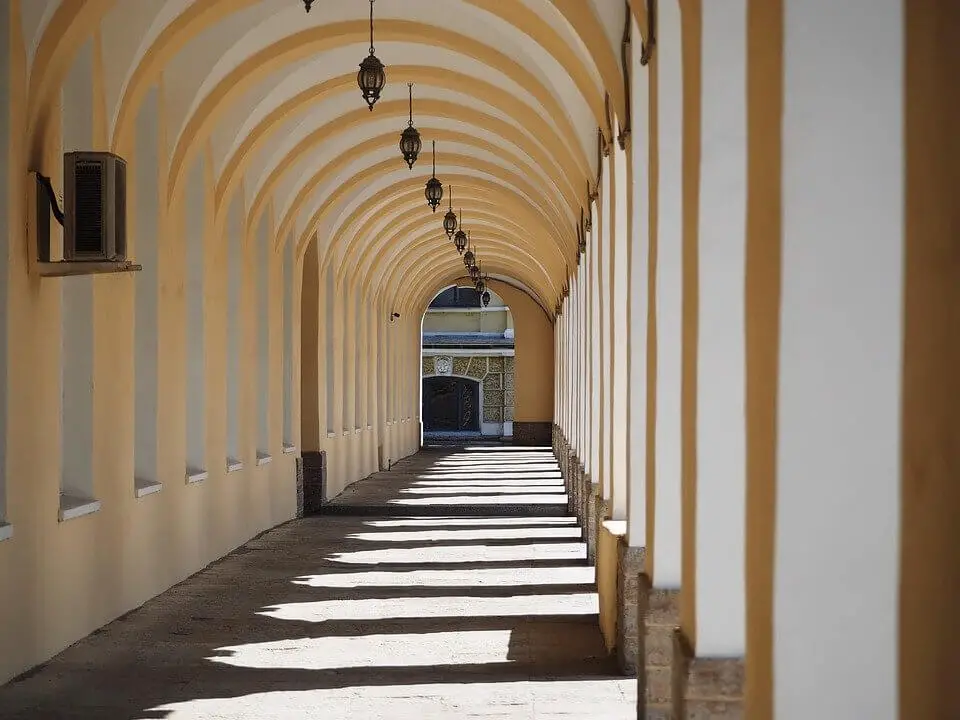An arch is an opportunity to abandon significant interior elements to free up useful space. In addition to saving residential meters, this solution will provide freedom of fresh air circulation and full home visibility.
The arch allows you to effectively visually zoning the area of the house, while combining the facilities together, which is important, for example, for a balcony and a room with access to it. If the transition from one room to another resembles a niche, or if you need to organize a door between the kitchen and the living room, then the arch will fit harmoniously.

When space flows from room to room interrupted only by archways, a basic design principle helps determine the wall and arch colors. Paint the arch to match the room you use the most. By definition, it is the room that the arch frames the most often view of the adjacent space. If the living room is a heavily trafficked space leading into the infrequently used dining room, the arch is painted to match the walls of the living room. Of course, every design rule exists to be broken, so consider the design before choosing paint colors.
Knowing These Points Will Help You A Lot
- If the archway is simple, paint the underside of it. If the rooms connected by it have two different colors, you should paint the underside of the arch with the lighter color of the rooms. If they both have the same color, you can paint it with a lighter color (cream or white, for example).
- Archways with moldings. They should be painted with a lighter and different color than that of the surrounding walls. The color needs to match the connected rooms. You can also get an archway made of wood crown molding and get furniture and decorations that match it.
- Large archways. They should be painted with the same color as that of the lighter room, or the one you use the most.
Pick Better Colors
Knowing what color to paint archway between rooms can be a huge stress reliever. We recommend these these light colors:
As these are common colors, in most case you’ll find these will blend in well with the wall colors you already have.
Paint It Like A Professional Designer With These Instructions

- Walk through the door rooms, or the top of the stairs and make notes on the use of space and what is visible through the arches or openings between rooms. Note the light levels and colors of the floors.
- Start with the main room and choose a color that will work with the furniture and your plan for the room. Look in each room or room that opens out of the main room and decide if you need a contrasting color, a different shade of the same color, or a neutral shade. It would be good to get some paint samples in small jars and place them in the center of each room to check how light affects that paint shade. Make sure you can see color swatches from one room to the next to get a sense of how they harmonize.
- Once you have decided on a color, start painting the main room. Start with the ceiling, down the walls, and paint the arches. Keep a sharp and clean line on the arc paint with tape; the edge of the arch closest to the next room with blue painter’s tape. Once the paint dries, remove the tape from the outer edge of the arch. Then paint the adjoining room in the same order as the main room.
Color And Shading Tips You Won’t Regret
- A very open space will seem much larger to you if two or more rooms, ceilings, and arches are painted the same light or neutral color.
- Although white is the most visually expanding color, well-used dark shades on just one wall can help you create a sense of depth. You can use a dark and satin color in a room with a lot of natural light, for example.
- Contrasting smells highlight architectural features and, if they are warm colors, add energy and interest to the feeling in the space. The cold tones, like blue and green, widen the spaces because they give the illusion of moving the walls away.
- Along with spaces with different light, you can paint different intensities of the same color. The darkest space should have the lightest shade of the paint.
- Pay attention to the colors and furniture designs for each room when making your paint selections.


![Why Does My Paint Scratch So Easily? [2023] Why Does My Paint Scratch So Easily](https://whospilled.com/wp-content/uploads/2023/06/Why-Does-My-Paint-Scratch-So-Easily-150x150.jpg)